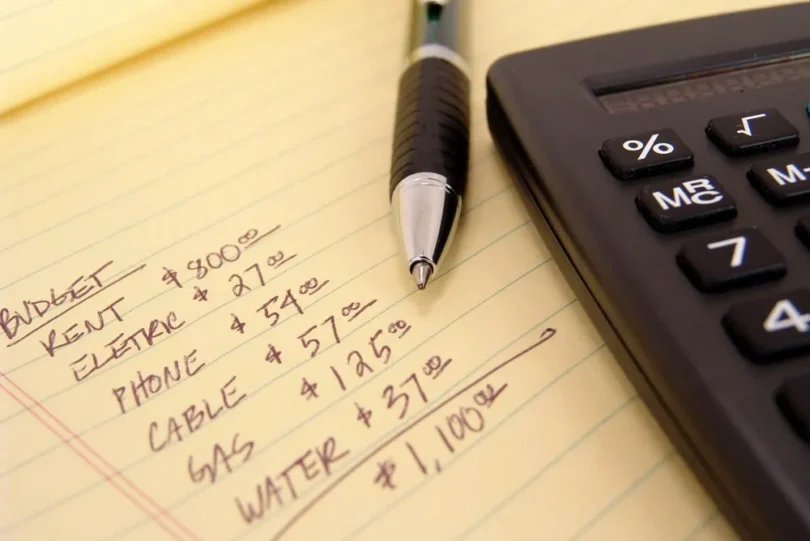Managing your finances might seem overwhelming, but creating a personal budget in just 7 steps can simplify the process and put you on the path to financial success. A well-structured budget not only helps you save money but also allows you to have a clear understanding of where your money is going each month. Whether you’re new to budgeting or looking for ways to enhance your financial planning, this guide offers easy-to-follow steps that anyone can implement.
What Is a Personal Budget?
A personal budget is a financial plan that outlines your income, expenses, and savings over a specific period, typically a month. It acts as a roadmap for how you should allocate your money, ensuring that you meet your financial goals, avoid debt, and save for the future. A well-maintained budget allows you to live within your means while planning for unexpected costs and long-term goals like buying a home or retiring.
Why Should You Create a Personal Budget?
There are many reasons to create a personal budget, but one of the most important is that it allows you to take control of your finances. Budgeting helps in:
- Tracking spending: Know where every dollar is going.
- Preventing debt: Control your finances to avoid over-borrowing.
- Achieving savings goals: Whether it’s saving for an emergency fund or a dream vacation, a budget can help you save money efficiently.
- Peace of mind: With a clear plan, you can feel more confident in your financial decisions and reduce stress about money.
How to Create a Personal Budget in Just 7 Steps
By following this simple and actionable guide, you can set up a personal budget that works for you. Below are the seven steps to get started:
Step 1: Track Your Income
The first step in creating a personal budget is understanding how much money you have coming in. This includes:
- Regular income: Salary, wages, and any additional jobs.
- Side income: Freelancing, part-time jobs, or gig work.
- Passive income: Interest from savings, investments, or dividends.
Understanding your total income is essential because it allows you to know what you’re working with when it comes to covering expenses and setting aside money for savings.
Step 2: List Your Monthly Expenses
Next, make a detailed list of all your regular expenses. Expenses can be categorized into fixed and variable:
- Fixed expenses: Rent, mortgage, car payments, insurance premiums.
- Variable expenses: Groceries, entertainment, utilities, dining out, and personal care.
This step ensures that you know where your money is going and helps identify areas where you may be overspending.
Step 3: Set Financial Goals
Your budget should reflect your short-term and long-term financial goals. Setting clear goals motivates you to stick to your budget. Goals could include:
- Short-term goals: Building an emergency fund, paying off a credit card, saving for a vacation.
- Long-term goals: Buying a house, retirement savings, investing in education.
Make sure your goals are specific, measurable, attainable, relevant, and time-bound (SMART).
Step 4: Calculate Essential and Non-Essential Expenses
Divide your expenses into essential and non-essential categories to better understand your financial priorities. Essential expenses include:
- Housing costs: Rent, utilities, and insurance.
- Transportation: Gas, public transport, vehicle maintenance.
- Groceries and healthcare: Food, medications, and doctor visits.
Non-essential expenses cover items such as entertainment, dining out, and subscriptions, which can be adjusted if needed.
Step 5: Create a Savings Plan
Saving money should be a top priority in your budget. Set aside a portion of your income for savings each month. Some popular strategies include:
- 50/30/20 rule: Allocate 50% of your income to needs, 30% to wants, and 20% to savings or debt repayment.
- Automate savings: Set up automatic transfers to your savings account each month.
- Emergency fund: Aim to save 3-6 months’ worth of expenses for unforeseen circumstances.
By consistently saving money, you’ll be better prepared for both short-term and long-term financial challenges.
Step 6: Adjust Spending and Cut Costs
Review your variable and non-essential expenses for opportunities to cut costs. Some ways to reduce spending include:
- Cancel unnecessary subscriptions: Streaming services or magazines you rarely use.
- Cut back on dining out: Cook more at home to save on food costs.
- Use coupons or discounts: Take advantage of sales and special offers.
Reducing expenses in these areas can help you free up more money for savings or debt repayment.
Step 7: Monitor and Adjust Your Budget Regularly
Your budget is not a static document—it’s meant to be flexible and adjust as your financial situation changes. Each month, review your budget to see if you’re meeting your financial goals and make necessary adjustments. Some tips include:
- Use budgeting tools: Apps like Mint or YNAB (You Need a Budget) can help track spending and savings automatically.
- Revisit goals: If your goals change, adjust your budget to align with new priorities.
- Reward yourself: Celebrate small wins, such as meeting a savings milestone or paying off a debt.
This ongoing process ensures that you remain on track to achieve your financial goals while adapting to any changes in income or expenses.
How to Save Money Using a Personal Budget
Now that you’ve created your budget, it’s time to focus on ways to save money effectively. A personal budget provides you with a clear picture of where your money is going, making it easier to identify opportunities to save. Some key tips include:
- Prioritize savings: Make savings a non-negotiable part of your budget.
- Look for cheaper alternatives: Swap expensive brands for store brands, or switch to a more affordable service provider.
- Challenge yourself: Try a no-spend challenge for a week or a month to save money quickly.
By being mindful of your spending habits and focusing on savings, you’ll be in a stronger financial position to achieve your goals.
How a Personal Budget Helps You Save Money
A personal budget is one of the most effective tools for managing your money and ensuring that you consistently save. It helps you:
- Eliminate unnecessary spending: By clearly seeing where your money goes, you’ll identify and cut out wasteful expenses.
- Reach savings goals faster: A budget allows you to allocate more money towards saving each month, helping you achieve your financial goals sooner.
- Reduce financial stress: Knowing that you’re saving money regularly gives you peace of mind and reduces anxiety about future expenses.
Conclusion
Creating a personal budget in just 7 steps can transform the way you manage your finances, allowing you to save money, reduce debt, and work towards your financial goals. By tracking your income, understanding your expenses, and consistently monitoring your budget, you’ll be well on your way to achieving financial stability. Remember, budgeting is an ongoing process that requires attention and adjustment over time, but the rewards are well worth the effort
.
Frequently Asked Questions
How do I start creating a personal budget?
Begin by tracking your income and listing all your monthly expenses. Break down your spending into fixed (essential) and variable (non-essential) categories, and set financial goals to guide your budgeting decisions.
How can a personal budget help me save money?
A personal budget provides a clear roadmap for your finances, helping you identify unnecessary expenses, prioritize savings, and achieve both short- and long-term financial goals.
What’s the 50/30/20 rule in budgeting?
The 50/30/20 rule suggests that you allocate 50% of your income to needs, 30% to wants, and 20% to savings or debt repayment. It’s a simple framework that helps balance spending and saving.
How often should I update my personal budget?
It’s recommended to review your budget monthly to account for any changes in income, expenses, or financial goals. Regular updates ensure that your budget remains relevant and effective.
What tools can help me manage my budget?
There are several budgeting apps available, such as Mint, You Need a Budget (YNAB), and EveryDollar. These tools help automate tracking and provide insights into your spending habits.
How can I stick to my budget?
To stick to your budget, set realistic goals, use tools to track your spending, review your progress regularly, and reward yourself for achieving financial milestones. Flexibility and consistency are key to long-term success.








Leave a Comment